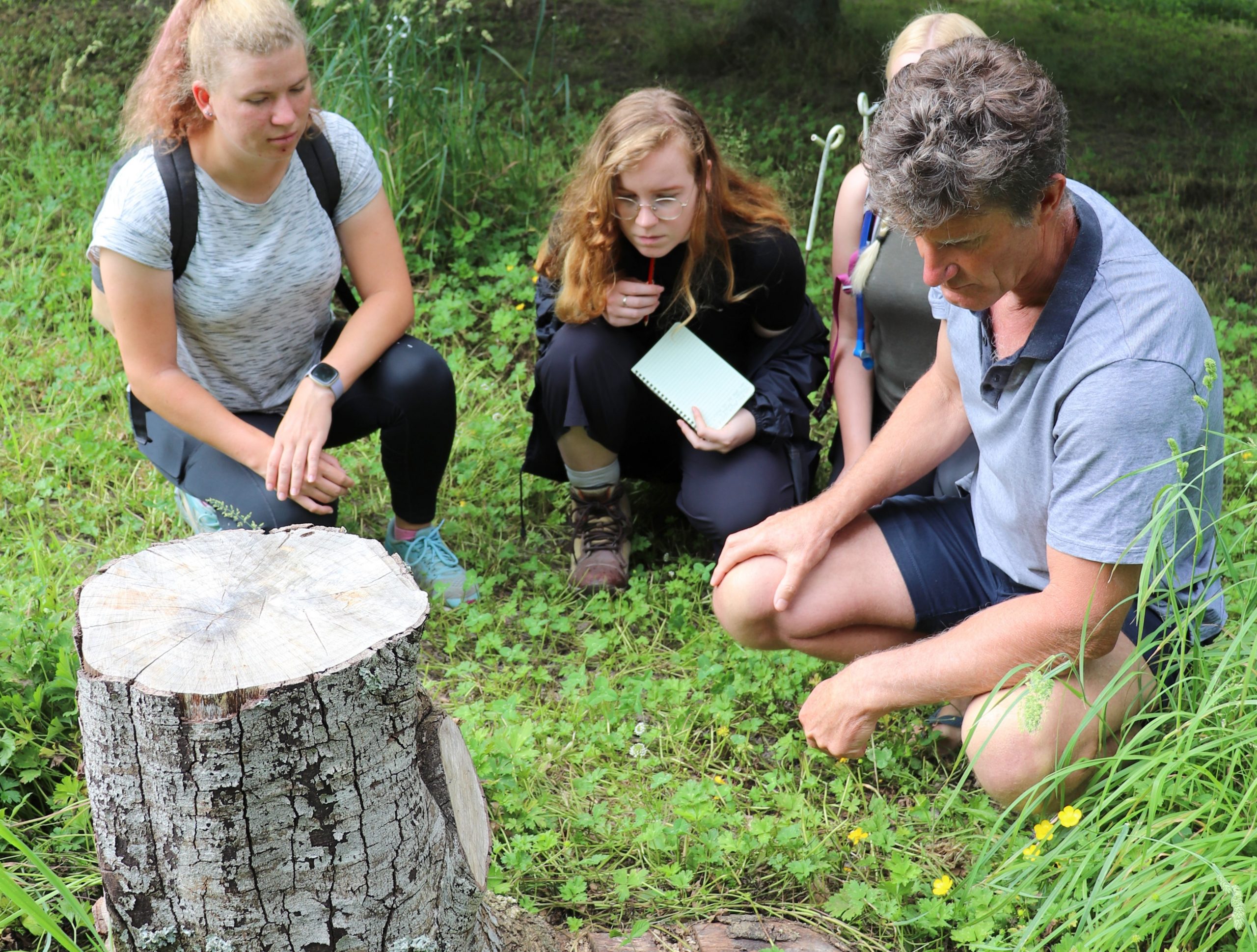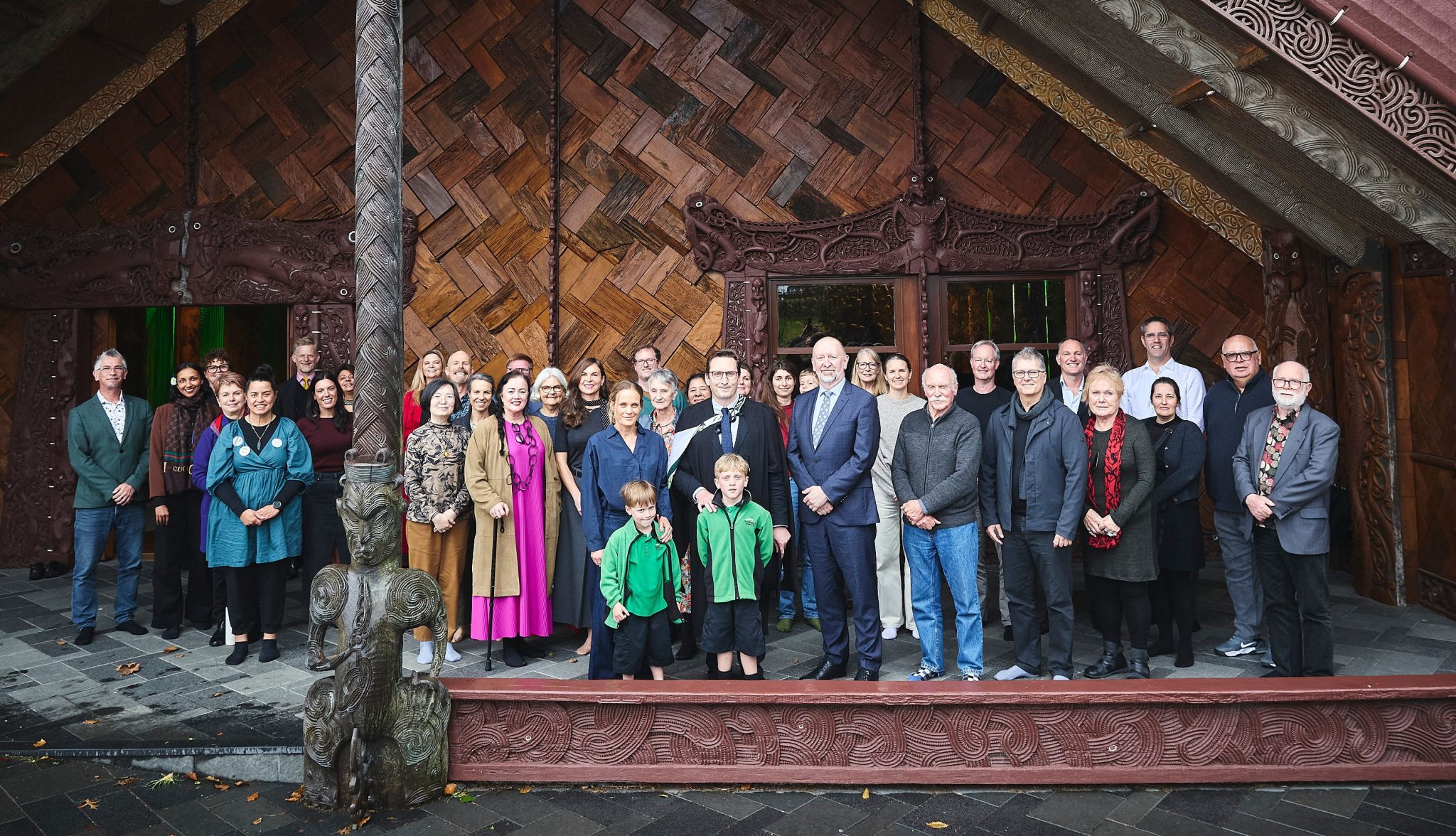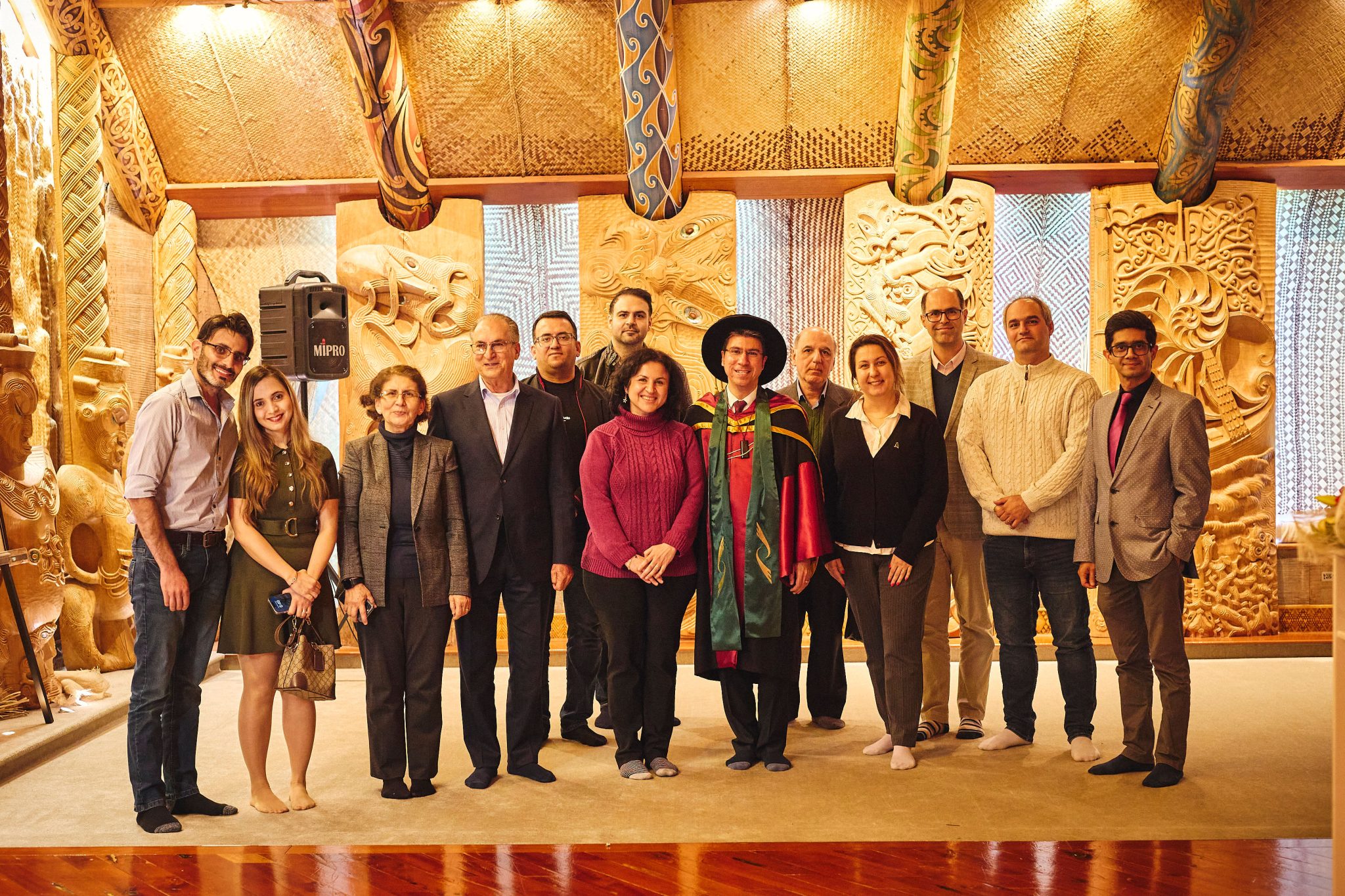Guest post by Diane Fraser
Chryee Jones, a current third-year Bachelor of Applied Science (BAppSci) student at Unitec’s School of Environmental and Animal Sciences (EAS), and two second-year degree students, Maddy Gibson and Sarah Kate Wechsler, all received Study Scholarships from the New Zealand Biosecurity Institute (NZBI) to support their research into an invasive beetle in the summer of 2021/2022. Chryee, who will use this research for the completion of part of her BAppSci programme, was also funded by Auckland Council.
The granulate ambrosia beetle (GAB) (Xylosandrus crassiusculus) is a 3mm-long species, native to South-East Asia. It is now widespread in North, Central and South America, Europe, some Pacific Islands and has recently arrived in Queensland, Australia. GAB has been detected overseas on more than 200 tree and shrub species in over 60 plant families, including commercially important tree species in Europe such as oak, beech, spruce and eucalyptus, a range of fruit trees (persimmon, avocado and rosaceous trees such as apple, plum and cherry) and ornamentals such as roses, magnolia, rhododendron and azalea. Damage can be extensive and can include stunting, delayed leaf emergence, premature defoliation or death of trees. This damage is caused by the beetles boring into the trees, transporting a pathogenic fungus into them. GAB was first formally identified in Blockhouse Bay, Auckland, in 2019, and was then detected in Riverhead and Titirangi. GAB has the potential to have a significant impact on a range of tree species in New Zealand, and further research on its location and impact at the initial stage of invasion is vital for future management.
Signs of GAB include sawdust in the form of compacted ‘noodles’ protruding from the trunk, branches and/or exposed roots in initial stages of insect occupation when the insect is actively tunnelling. Small entry holes to the beetle’s tunnels, of 1mm in diameter, are found with or without noodles but can be very hard to detect.
The impact of these beetles can be rapid in a tree species. Gerald Collett, a qualified arborist at GeoTree Limited, related his experience of his first encounter with GAB.
“On my property I have a group of seven oaks (Quercus spp.) (a collection from the red-oak group of oaks) that I grew from acorns and are approximately 20 years old. In the autumn of 2018 the trees were all healthy and in full autumn colours. The following spring, October 2018, one of the seven never came into leaf, did not bud or produce a single leaf. In November 2018 I found a few borer holes at the base of the trunk, with some loose, ‘powdery’ frass at the base of the tree. There was also what was thought to be a pellet of sawdust noodle lying on the ground. In December 2018 and February 2019, I found noodles protruding from the lowest branch and from the trunk of the same tree. Scion, AsureQuality and SPS Services visited the property in March 2019 and, after testing, confirmed GAB in this oak tree. Using my knowledge as an arborist, I was convinced that nothing had occurred to (or around) the tree that would have caused the tree to die and, therefore, I assumed that the death of the tree was due to the presence of GAB. The standing dead tree was subsequently felled. GAB was also found in a gingko (Gingko biloba) that died in November 2017 and a horoeka/lancewood (Pseudopanax crassifolius) that died in February 2020 on my property.”
The students have been working in collaboration with scientist Andrew Pugh of Scion, a Crown Research Institute in Rotorua, primarily on Gerald Collett’s property, and are aiming to determine the current distribution of GAB in previously identified locations of the beetle and record the plants in which the beetles are detected. Students will map their findings with assistance from Dr Glenn Aguilar, the GIS (geographic information system) specialist at EAS. The current student research project is an extension of the original study. As highlighted by Andrew Pugh:
“GAB poses a real threat to a range of native and industry-relevant plants, and investigating the distribution in Auckland provides valuable information to inform management options and future research priorities. It has been fantastic to collaborate with enthusiastic students and get updates on the known GAB distribution.”
Students searched for GAB on the Kumeu site from December 2021 to February 2022. Vacated holes were found in trees on the property, but no active GAB was detected in any trees. However, beetles were caught and identified in ethanol-baited traps. The question now is, where are they and have they moved to new locations in the surrounding area? Detecting small invasive species such as GAB is difficult, particularly when the incursion is recent and the numbers are low. This is exacerbated by the insect’s ability to disperse up to 2 kilometres from the original site.
This scholarship research has raised more questions than solutions and, although no trees with active beetle infestations were detected, from the students’ point of view the opportunity has been very positive. Chryee said the scholarship has validated her research:
“For me this scholarship just validated that I’m moving from ‘just a uni student’ to someone doing something that seems worthwhile to the scientific community. It adds value and a level of importance to the work I’m doing that I haven’t had before.”
The second-year students, Maddy and Sarah Kate, also saw the benefit of these scholarships:
“Being awarded this scholarship was a great opportunity that allowed us to contribute to a field that we are both interested in working with in the future. We were able to work alongside some fantastic people who shared their vast knowledge with us, further increasing our interest in the field. The fieldwork was a great first experience that allowed us to gain new skills, helping us grow as students. We look forward to working on the GAB project in the future.”
Chryee, Maddy and Sarah Kate are supervised at Unitec by Associate Professor Diane Fraser and Dr Glenn Aguilar. “Student research collaborations with industry are an excellent means of introducing students to real-world learning and the wider industry. The three students will be presenting a poster at the NZBI NETS (national education and training seminar) conference in August 2022. We are all grateful for the co-operation shown by Andrew Pugh and Gerald Collett, and the generosity of funding by NZBI and Auckland Council. Supporting students in this type of work is extremely rewarding,” says Associate Professor Fraser.




